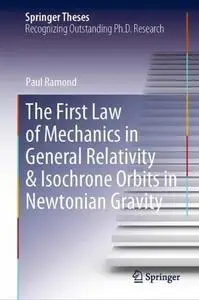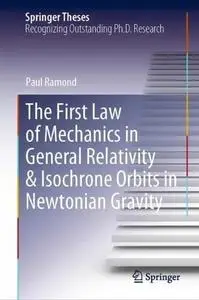The First Law of Mechanics in General Relativity & Isochrone Orbits in Newtonian Gravity by Paul Ramond
English | EPUB (True) | 2023 | 408 Pages | ISBN : 3031179633 | 40.6 MB
The thesis tackles two distinct problems of great interest in gravitational mechanics — one relativistic and one Newtonian. The relativistic one is concerned with the "first law of binary mechanics", a remarkably simple variational relation that plays a crucial role in the modern understanding of the gravitational two-body problem, thereby contributing to the effort to detect gravitational-wave signals from binary systems of black holes and neutron stars. The work reported in the thesis provides a mathematically elegant extension of previous results to compact objects that carry spin angular momentum and quadrupolar deformations, which more accurately represent astrophysical bodies than mere point particles.



